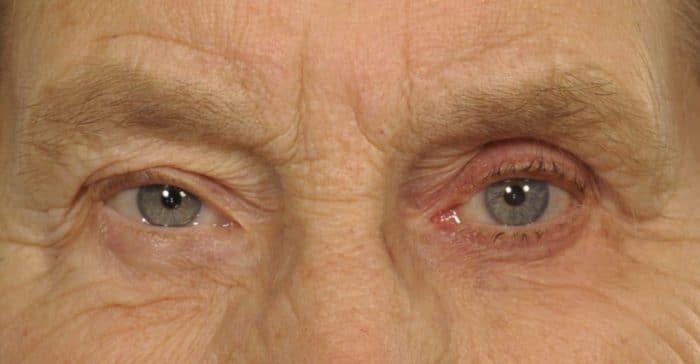Only for Licensed Professionals
Only for Licensed Professionals

Latisse Orbital Fat Loss – Is It Reversible?
Nina Petrovic
Last Updated On: June 20, 2024
Did you know that some users of eyelash growth serums have reported a sunken eye appearance due to fat loss around the eyes? This phenomenon, known as orbital fat loss, has raised concerns among beauty enthusiasts.
Latisse is an FDA-approved eyelash serum that promises longer, thicker lashes. Its active ingredient, Bimatoprost, initially treated glaucoma and revealed unexpected lash-enhancing properties. However, some users have reported side effects like hollowing around the eyes. Despite this, Latisse remains famous for those seeking more dramatic eyelashes.
This article will explore the intricate science behind orbital fat loss and the possibility of reversing this effect after using lash growth serums like Latisse.
Key Takeaways
- Orbital fat loss, a potential side effect of Latisse, involves reducing fat around the eyes, leading to a sunken appearance.
- While orbital fat loss is rare, users and clinicians must know the risk factors, such as prolonged use and individual susceptibility which can increase the likelihood of this adverse effect.
- Current evidence suggests that orbital fat loss from Latisse may not be fully reversible.
- For individuals concerned about orbital fat loss, considering alternative treatments or lower concentrations of bimatoprost may be beneficial.
About: Operating since 2016, Med Supply Solutions is known for being one of the industry’s top and trusted suppliers of cosmetic and viscosupplementation products. If you’re looking to buy Latisse online, contact our sales department for more information.
What is Latisse and Its Potential Side Effects?
Latisse, a lash serum for longer, thicker lashes, may cause side effects like itchy eyes and darker eyelids. Its active ingredient, a prostaglandin analog, promotes lash growth. Originally used to treat ocular conditions, Latisse now serves cosmetic purposes. However, some users report an orbital fat loss, prompting caution despite its aesthetic benefits.
Understanding potential risks is crucial, emphasizing the need for informed decisions when considering Latisse for lash enhancement. Consulting with a healthcare professional can provide personalized guidance and help weigh the pros and cons before starting treatment.
Potential Side Effects of Latisse
Latisse, a popular eyelash growth serum, can sometimes cause unwanted side effects. One of its key ingredients, prostaglandin analogs, is linked to changes around the eyes.
- Orbital fat loss may occur after extended serum use, resulting in sunken or hollow eyes.
- Eye redness and itchiness may persist for hours after application.
- Dry eyes are reported by some users, especially those with pre-existing conditions.
- Darkened eyelids can occur where the serum is applied, leading to noticeable color changes.
- Rare but permanent side effect: blue or green eyes turning brown.
- Eyelash growth becomes uneven, with some longer than others, creating an inconsistent look.
- Skin irritation around the eye includes redness, swelling, or burning sensation.
- Allergic reactions range from mild to severe and may require medical attention.
- Infection risk increases if the applicator is contaminated or reused, leading to conditions like conjunctivitis or blepharitis.
Mechanisms and Prevalence of Latisse-Associated Orbital Fat Loss
Latisse can cause orbital fat loss, resulting in sunken or hollow-looking eyes for some users due to the shrinkage of fat cells around the eye area. Prostaglandin analogs (PGAs) in Latisse are responsible for this effect, interfering with fat cells and gradually reducing fatty tissue.
Reversibility of Orbital Fat Loss from Latisse Use
Knowing if orbital fat loss from Latisse use can be reversed leads to another important topic. We now explore the factors that affect whether this condition can turn around.
- Latisse Duration: Long-term users face challenges reversing orbital fat loss compared to short-term users.
- Healing Response: Bodies react differently; some may naturally recover faster than others.
- Patient Age: Younger individuals may see quicker reversal due to more resilient skin and tissues.
- Product Discontinuation: Stopping Latisse is crucial for any chance of reversal.
- Health and Lifestyle: Healthy habits support healing and potential fat restoration.
- Fat Loss Severity: Minor cases have a higher chance of reversibility.
- Eye Product Use: Avoiding similar products prevents further damage.
- Medical Interventions: Consulting professionals might be necessary for treatments like fillers.
- Genetic Factors: Some resist or succumb more to Latisse’s effects on orbital fat.
- Patience: Recovery takes months for noticeable improvements.
Case Studies and Expert Opinions on Reversibility
Opinions differ on the reversibility of orbital fat loss from Latisse. Some observe gradual improvement after discontinuation, but full recovery isn’t guaranteed for everyone. Results vary, with no certainty of complete reversal.
In a study published in the Aesthetic Surgery Journal, researchers reviewed cases of patients who used topical ophthalmic bimatoprost 0.03% (the exact formulation marketed as Lumigan for glaucoma treatment). They presented with periorbital hollowing due to fat atrophy.

These patients had been using bimatoprost for glaucoma treatment and experienced fat changes around the eyes as a side effect. These effects can be irreversible, so Latisse patients should be aware of this potentially disfiguring side effect.

Additionally, while there have been no specific reports of orbital fat loss in Latisse patients, it’s essential to consider the risks.
Treatment Options for Latisse-Associated Orbital Fat Loss
Several treatment paths exist for those dealing with orbital fat loss from Latisse. Doctors can suggest ways to help manage or improve this condition. Latisse orbital fat loss can make eyes look sunken. Treatment options are essential to help fix this issue.
- Stopping Latisse use allows the body to rebuild lost fat around the eyes slowly.
- Eye creams enriched with peptides and retinoids can improve skin texture and promote a healthier appearance.
- Dermal fillers, injected by a professional, restore volume and give immediate results.
- Fat grafting, a more invasive option, involves moving fat from another body part to the eye area.
- Laser treatments can tighten skin and stimulate collagen production, offering a non-surgical solution.
- Platelet-rich plasma (PRP) therapy uses one’s blood components to rejuvenate the skin and encourage fat regeneration.
- Consulting with a dermatologist or plastic surgeon can provide tailored advice and treatment plans based on individual needs.
Counseling Patients on Orbital Fat Loss Risk with Latisse Use
It is crucial to discuss with patients the risks of using products like Latisse and Revitalash. Healthcare professionals must be transparent and honest about potential side effects, including orbital fat loss.
- Start with an overview of Latisse, focusing on its use as a lash growth serum.
- Explain how prostaglandin analogs, the active ingredients in Latisse, can impact the fat around the eyes.
- While some people see great results for their lashes, orbital fat loss can cause sunken or hollow eyes.
- Share that this side effect is not common but has occurred in some individuals.
- Discuss the importance of looking at before and after pictures that showcase orbital fat loss from Latisse use.
- Stress that stopping Latisse could reverse orbital fat loss in most cases, but it might not work for everyone.
- Encourage patients to report any changes around their eyes as soon as they notice them.
- Offer alternatives to Latisse if patients are worried about the risk of orbital fat loss.
- Assure that you will monitor their progress closely if they use Latisse.
- Remind them that every person reacts differently to medications and treatments.
Alternatives to Latisse for Patients Concerned About Orbital Fat Loss
Doctors must explore safer alternatives for patients concerned about Latisse’s risk of orbital fat loss. Over-the-counter serums without PGAs, relying on peptides and natural oils, offer peace of mind. Proper nutrition and gentle eye care routines support lash health, ensuring satisfactory outcomes without harmful side effects.
Conclusion
Latisse can lead to orbital fat loss, giving the eyes a sunken look. Most often, stopping Latisse helps reverse this effect slowly. Some treatments can also help manage it. Talking with a doctor is smart if someone notices changes around their eyes after using Latisse. They can guide you on what steps to take next.
FAQs
1. What’s Latisse, and why might it cause orbital fat loss?
Latisse is a lash serum that may cause orbital fat loss.
2. Is Latisse safe to use for my eyebrows, too?
Latisse can be used for eyebrows and is safe.
3. Can you compare Latisse with GrandeLash? Which one should I go for?
Latisse and GrandeLash have different ingredients and results.
4. If I notice my eyes looking a bit hollow after using Latisse, can I reverse that?
Orbital fat loss from Latisse may be reversible with early intervention.
References
Reddit. Those who used Latisse: was your orbital fat loss reversed? Published May 6, 2022. Accessed May 20, 2024. https://www.reddit.com/r/beauty/comments/ujcl1m/those_who_used_latisse_was_your_orbital_fat_loss/
Sira M, Verity DH, Malhotra R. Topical Bimatoprost 0.03% and Iatrogenic Eyelid and Orbital Lipodystrophy. 2012;32(7):822-824. doi:https://doi.org/10.1177/1090820×12455659
Products
Cart
Log In
Newsletter
Subscribe for exclusive offers and updates on new arrivals
Share feedback at:
Working Hours
MON - SUN 9AM to 6PM EST
The Most Popular Brands
Med Supply Solutions
Support
Secure checkout is guaranteed with full adherence to PCI DSS payment standards.
Products listed here are guaranteed authentic and manufacturer-sourced.
Pay easily with trusted providers


*Google and Apple Pay are currently only available via a direct link provided by your account manager.
Copyright 2025. Med Supply Solutions